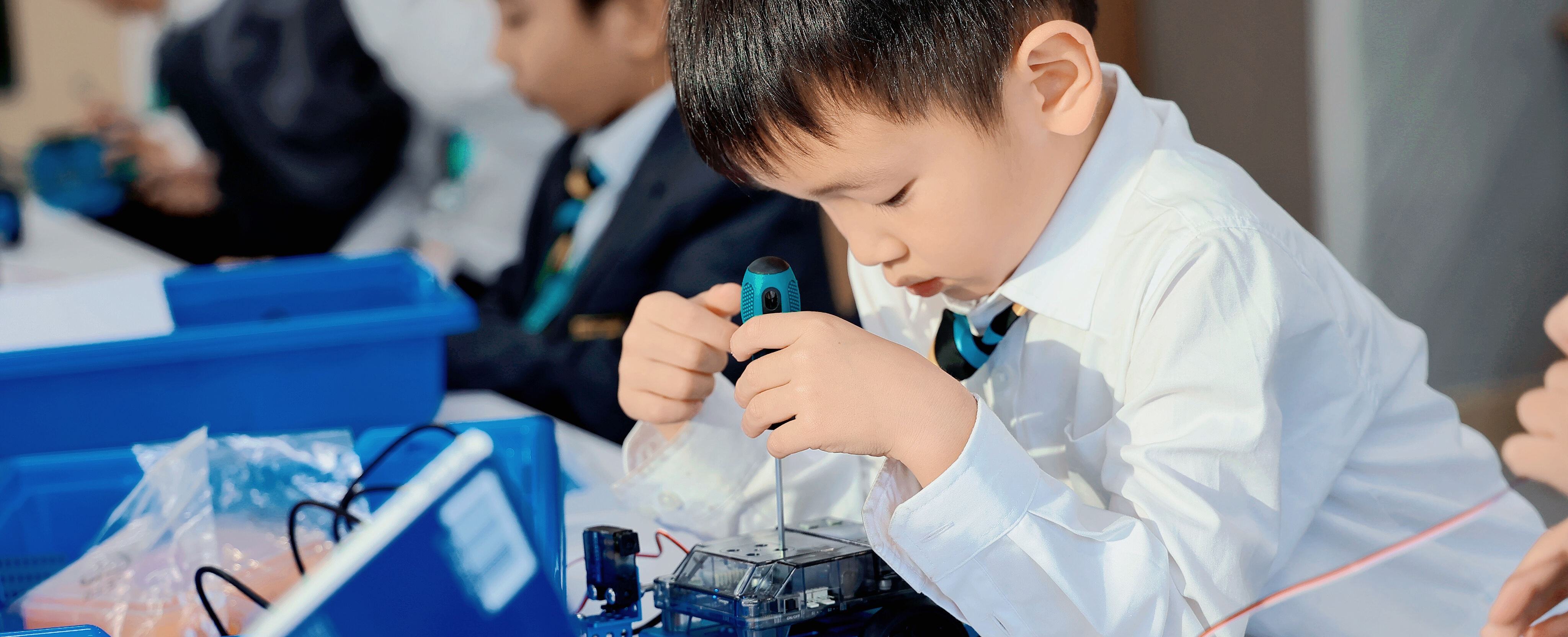
In the development of education, the effectiveness of data is often used as a standard for dividing pupils' academic levels. People are accustomed to simplifying the effectiveness of data into rankings. The advent of the big data era has brought new changes and opportunities to various industries and has also gradually transformed the role of data in the education industry from a "ranking machine" to an excellent auxiliary tool.
At Huili School Nantong, various scientific analysis methods based on big data have been widely used in teaching in various subjects. The single method of subject score assessment is no longer the way we evaluate pupils' learning outcomes. By combining multiple data analysis methods, teachers can further understand pupils' personalised needs, mastered skills, and learning motivation.
We are fortunate to invite Tom Li, the Maths Teacher, to share how data is used to inform and drive-up academic standards in our teaching.
李旭
Tom Li
数学教师
Maths Teacher
Why do we need to use data?
为什么我们要利用数据进行分析?
At Huili Nantong we use a combination of experience and data analysis to understand pupils more scientifically and comprehensively. From this, teachers formulate and develop next steps and strategies to support all pupils to achieve their individual goals.
In addition, data is also increasingly used in teaching to help predict pupils' future development. Based on big data predictions, teachers can see the level that pupils can reach in 5 or even 10 years, and how to help pupils achieve higher goals based on these predictions is the direction that every teacher strives for.
How do we need to use data?
我们是怎样利用数据帮助学生进行成长的?
At Huili School Nantong, a pupil-centred data evaluation framework has been built based on Cognitive Abilities Test (CAT4), Progress Test Series (PTS), Pupil Attitudes to Self & School Survey (PASS).
The Cognitive Abilities Test (CAT4) provides teachers with a comprehensive understanding of pupils' core learning abilities through four dimensions of literacy (Verbal Reasoning, Quantitative, Non-verbal Reasoning, and Spatial Ability). Through this test, teachers have a comprehensive understanding of the dimensions of pupils' cognitive world, tap into pupils' special learning talents, identify their areas for development, and help pupils develop in a more targeted manner.
For example, a pupil only scored 70 points in a random test, but his potential test tells us that he has the potential to score 100 points. Why is there a 30-point gap? Did he spend his energy on other aspects? Was he appropriately prepared? Did he understand the questions? With the data reference of cognitive ability testing, teachers can identify the problems that pupils have and respond quickly and effectively based on their own characteristics.
The data brought by Progress Test Series (PTS) mainly reflects the mastery of pupils' knowledge in various subjects. Teachers combine these data with data directly generated in teaching activities, such as in-class exercises, tests, experiments, and group reports, to comprehensively consider pupils' academic development and carry out differentiated teaching. These data can be compared horizontally with individual, class, and grade overall levels, and vertically compared with past data to understand pupils' progress and growth, reflect the effectiveness of teaching activities, and identify areas for improvement.
“Attitude, not aptitude, determines altitude”
Zig Ziglar – motivational speaker
Learning attitude is a crucial part of the learning journey. How can we scientifically and effectively measure pupils' learning attitudes? Pupil Attitudes to Self & School Survey (PASS) provides teachers with data support. Pupils' wellbeing, classroom participation, and attention are all important indicators of measuring pupils' learning attitudes. With the support of data, we hope to better understand pupils' needs and problems, and provide education services that better meet their personalised needs.
At Huili School Nantong, data is like a brush in the hands of teachers, it draws a precise and comprehensive profile for pupils. From Nursery to High School, this profile is high personal and becomes a unique development record for each pupil. When applying for universities, this portrait can also provide systematic and strong support to interviewers for pupils' comprehensive qualities and potential. We use scientific analysis of data to finely depict pupils' characteristics, understand their learning needs, and guide their learning process. By summarising and analysing the learning styles and behaviours of different pupils from data, we can provide personalised learning support. By teaching according to pupils' aptitude, we can provide more choices and opportunities for their future development.